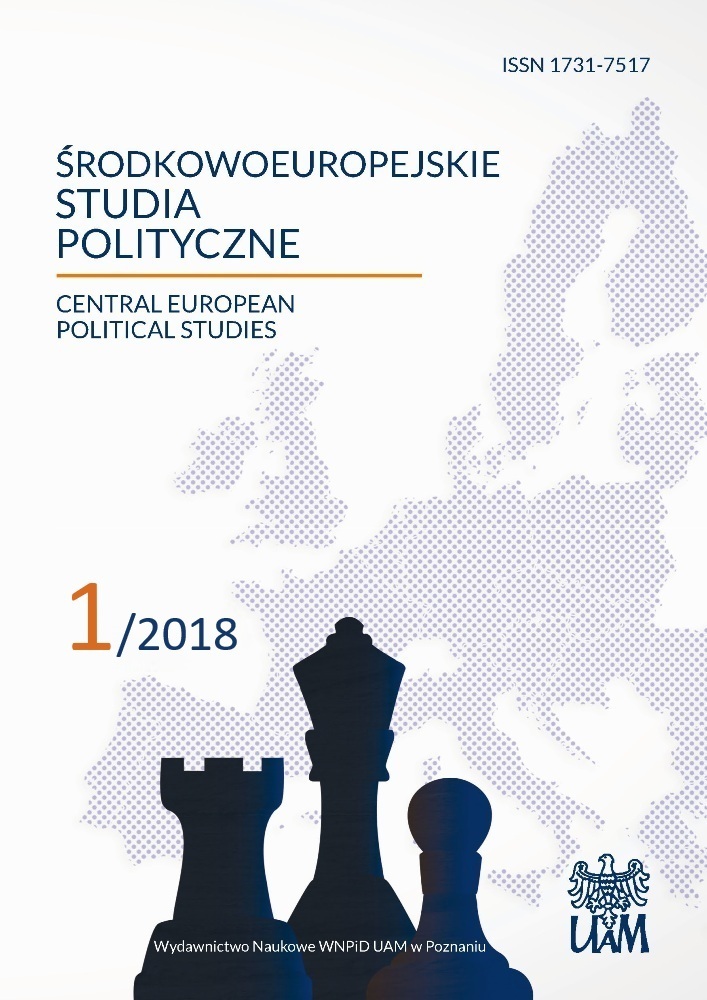Abstrakt
Czy jest możliwa identyfikacja fałszerstw wyborczych za pomocą narzędzi statystycznych? W kilku artykułach opublikowanych w okresie kilku ostatnich lat, m.in. Roukema (2009), Perrichi i Torres (2011) oraz Mebane (2013) użyli metody badawczej, która ich zdaniem może pomagać w wykrywaniu oszustw, które miały miejsce podczas elekcji. W tym artykule, odpowiadam na pytanie, czy tzw. „prawo” Benforda, które zostało wykorzystane np. do weryfikacji nieprawidłowości podczas wyborów prezydenckich w Iranie (2009), jest wiarygodną metodą badawczą. Niestety, przykłady empiryczne wskazują, że użyteczność wskazanej metody jest dyskusyjna.Bibliografia
Berger A., Hill T. P. (2011), A basic theory of Benford’s Law, „Probability Surveys”, nr 8, s.1–126.
Berger A., Hill T. P. (2011), Benford’s Law strikes back: No simple explanation in sight for mathematical gem, „The Mathematical Intelligencer”, nr 33(1), s. 85–91.
Breunig C., Goerres A. (2011), Searching for electoral irregularities in an established democracy: Applying Benford’s Law tests to Bundestag elections in Unified Germany, „Electoral Studies”, nr 30(3), s. 534–545.
Brock T. (2014), Benford’s law and elections – part 2, https://datatodisplay.com/blog/politics/benfords-law-elections-2
Deckert J., Myagkov M., Ordeshook P. C. (2011), Benford’s Law and the detection of election fraud, „Political Analysis”, nr 19(3), s. 245–268.
Fewster R. (2009), A Simple Explanation of Benford’s Law, „American Statistician”, nr 63(1), s.20–25.
Gawron P., Pawela Ł., Puchała Z., Szklarski J., Życzkowski K. (2015) Wybory samorządowe 2014 w poszukiwaniu anomalii statystycznych, „Studia wyborcze”, nr 30(3), s. 534–545.
Gelman A. (2009) Unconvincing (to me) Use of Benford’s Law to Demonstrate Election Fraud in Iran, http://fivethirtyeight.com/features/unconvincing-to-me-use-of-benfords-law/.
Geyer C. L., Williamson P. P. (2004), Detecting fraud in data sets using Benford’s Law, „Communications in Statistics-Simulation and Computation”, nr 33(1), s. 229–246.
Mebane W. R. (2011), Comment on „Benford’s Law and the detection of election fraud”, „Political Analysis”, nr 19(3), s. 269–272.
Mebane W. R. (2006), September, Election forensics: the second-digit Benford’s law test and recent American presidential elections, Election Fraud Conference.
Pericchi L., Torres D. (2011), Quick Anomaly Detection by the Newcomb-Benford Law, with Applications to Electoral Processes Data from the USA, Puerto Rico and Venezuela, „Statistical Science”, nr 26(4), s. 502–516.
Roukema B. F. (2009), Benford’s Law anomalies in the 2009 Iranian presidential election, „Journal of Applied Statistics”, nr 41(1), s.164–199.
Tam Cho W. K., Gaines B. J. (2007), Breaking the (Benford) law: Statistical fraud detection in campaign finance, „The American Statistician”, nr 61(3), s. 218–223.
Źródła danych:
PKW, http://pkw.gov.pl/.
Australian Electoral Commission, http://results.aec.gov.au/17496/Website/HouseResultsMenu-17496.htm.

